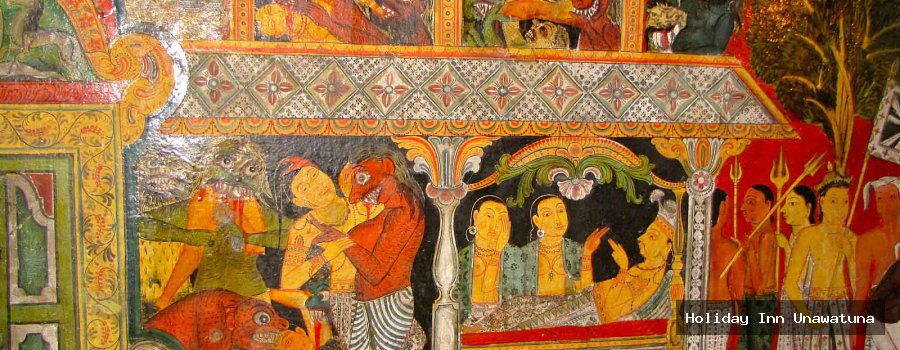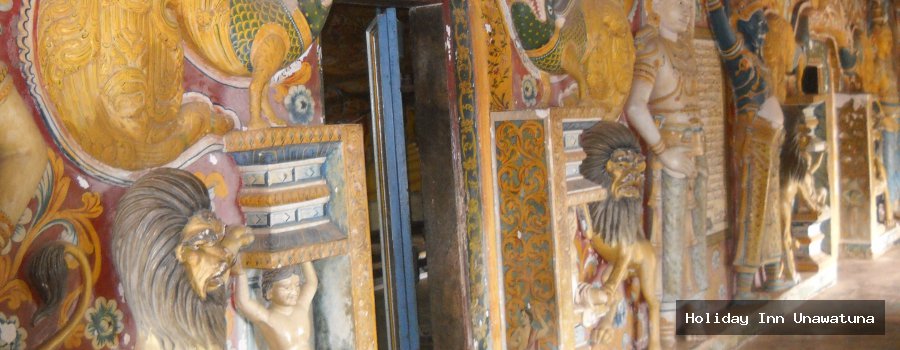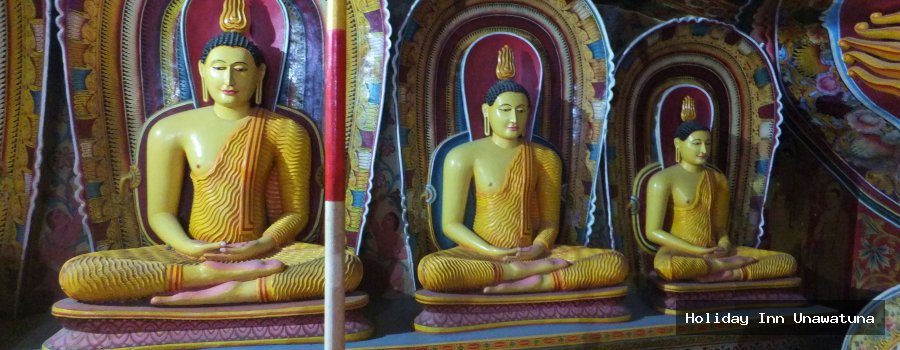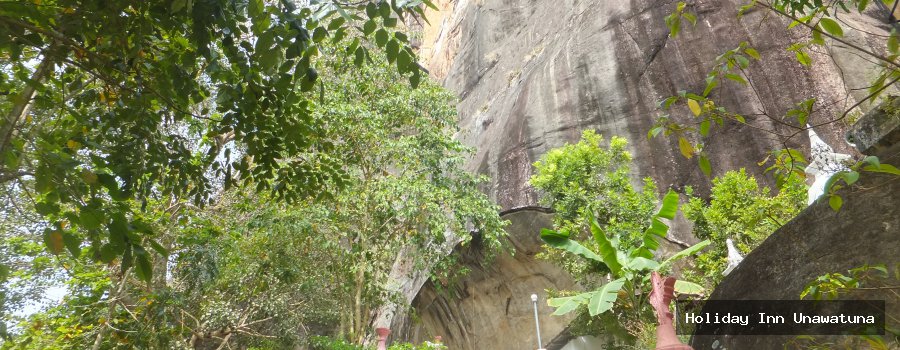According to the ancient chronicle Mahavamsa, the Mulkirigala temple was constructed by King Saddhatissa in the third century. After this period the temple received royal patronage by numerous successive kings. In 461-479 AD period a stupa was constructed at Mulgirigala was by King Datusena and the temple was further developed by King Kirti Sri Rajasinghe (1747-1782).
The common name of temple is Mulkirigala, but it is also referred to as Mulgirigala, Muvathitigala, Muhudungiri and Dakkhina Vihara.
As mentioned in the Bodhi Vamsa chronicle, one of the temples known as Giriba Viharaya where one of a Bo sapling out of 32 saplings germinated from Jaya Sri Maha Bodhi is planted, which was currently identified as Mulkirigala temple.
During the Polonnaruwa period this temple was known as Samuddagiri Viharaya, according to the Rev. Kamburupitiya Wanaratna Thero who had read the stone inscription of the pond.
Also with the arrival of the Europeans, Mulkirigala was named as Adam’s Berg. It is believed that Europeans confused Mulkirigala with the Sri Pada (Adam’s Peak) and have believed tombs of Adam and Eve were located here.
Mulkirigala Rock Temple or the Raja Maha Viharaya can be reached coming along Beliatta -Weeraketiya main road and turning off at Mulkirigala Junction. The temple is situated 2 kM from the Mulkirigala Junction. One can reach Beliatta Town from either Dikwella or Tangalla.
The Rock of Mulkirigala rises about 676 feet from the surrounding land mass. There are seven cave temples situated in five Terraced areas of different altitudes. They are the Lower Terrace (Patha Maluwa), Bo Tree Terrace ( Bodhi Maluwa). Great King’s Temple Terrace ( Raja Maha Vihara Maluwa), Upper Bo Tree Terrace (Uda Bodhi Maluwa) and Chetiya Terrace (Chaitya Maluwa). These terraces can be accessed comfortably through well paved granite paths and steps going right upto the Dagoba Terrace.








